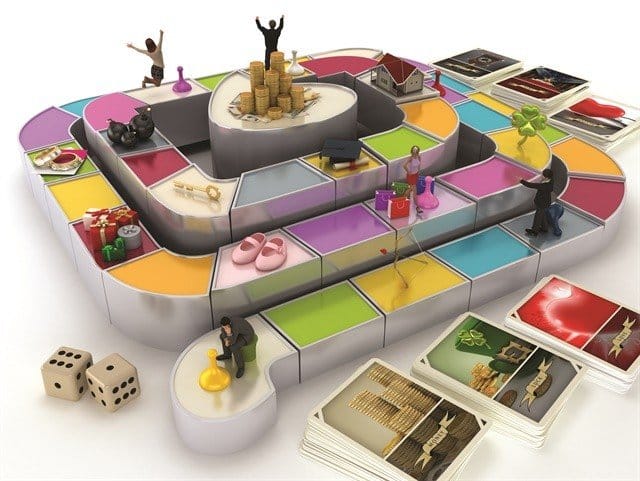- Car Rental Software, Uncategorized
- July 13, 2016
Make a Game of It: Strategies to Improve Employee Engagement

We all have been engaged at some level of gamification throughout our lives. In business, big brand companies have been using gamification techniques for decades to improve sales and brand loyalty as well as increase customer retention.
Today, the name of the game is retaining employees and increasing their level of engagement. Engagement is paramount to create a better ambassador for your brand and increase the loyalty of your most important customer — your employee.
Making priorities like financial target achievement, skills development, and team cohesiveness a focus for your team members — as it is for your organizational leaders — is at the crux of achieving peak performance.
“Gamification” is proving to be one of the most effective ways to bridge this gap.
The stats are staggering as to why gamification should be one of your top initiatives. Recent employee surveys have detailed the issues in the current workforce: $11 billion is lost annually in the United States due to employee turnover, while only 16% of the U.S. workforce is “fully engaged.”
Here are the steps to creating and implementing a gamification plan.
Step 1: Create the Environment
Creating an environment of healthy competition where stakes are measured, rewards are earned, and everyone is driven toward a common goal move the needle more quickly than simply creating a stick- and-carrot environment where rewards can quickly lose their luster.
Healthy competition also has the added element of creating a buzz around strategic initiatives that can have your teams thinking and talking (positively) about work, even when they are off the clock. That’s a sign of an engaged workforce and the signature of an organization, not just a place where people work.
Step 2: Gain Buy In
The most effective gamification strategies come from soliciting the people who will be playing the game.
A recent survey by TalentLMS found that the great majority of respondents were in favor of point systems, multiple difficulty levels, real-time performance feedback, online learning, and leaderboards that allowed them to compete with colleagues.
Step 3: Establish the Rules
Gamification is not only about contests, it’s also about applying game-design elements and principles in non-game contexts. These techniques will turn a temporary pop in numbers into sustainable success:
Keep it simple: The strategy should be easily explained as to the concept, the actual game, and the goal of the game.
Focus on both the individual and the team: To get every level of your team involved, you should incorporate not only individual achievements but also a team-focused element. This helps build a team environment; everyone has a stake in the outcome — individually and collectively.
Solicit game ideas from the group: If your team is part of the process of creating a gamification strategy, ask for ideas to create a higher level of engagement. It also promotes ownership on their part to improve the sustainability and success of that particular strategy.
Make it voluntary: Participants should have the option to participate. Forcing someone to participate will only increase his or her level of disengagement. A proper strategy — with employees assisting on the development of the strategy — will help reduce the number of team members not willing to participate. Be patient, they will come around.
Keep an eye on the prize: There should be a goal to each of the strategies. This goal should be able to be measured, attained, and easily explained to all of those participating.
Step 4: Keep a Scoreboard
As outlined in “The 4 Disciplines of Execution” by Chris McChesney and Sean Covey, keeping a compelling scoreboard engages your team by reporting if the team is winning or losing. The keys to an effective scoreboard include:
Use an engaging method: Remember, you are motivating your frontline; these are people-focused workers who are not always numbers-focused. Thus, printing up sales reports and tacking them to a cork board is not an effective way to motivate. After the first few days of the report being on the board, even if you post an updated report daily, people stop taking notice.
Make it visible to the team: Does your team have access to the program and then sign on and log in to see the score? If not, it’s not visible to the team. The team is the organization — from the C suite to middle managers to the frontline. Not all will have quick access. You want your scoreboard to be quickly accessible, easily viewed, and able to be updated daily.
Highlight the right metrics: If your organization is like many others, there is a constant threat of analysis paralysis. Many metrics often change depending on which report you use or who you are asking. Focus on the base metrics that impact the overall numbers.
For example, if you are measuring revenue, is there a volume component that your frontline cannot control? If so, move to a more accurate measurement, such as revenue divided by transaction or revenue divided by rental days. It evens the playing field — an agent who works a busier shift may generate more revenue but be far less effective in your sales process.
Demonstrate the leaders: You should be able to tell at a glance whether the team is achieving its goal or how far it has to go to meet its goal. The use of a thermometer measurement is a fast way to do this.
Step 5: Maintain Engagement
Mary is a top performer and wins every contest. She’s at the top of every scoreboard, and the rest of the team members know they are playing for second place. Remember, the goal of gamification is to keep everyone engaged and to move the numbers by generating higher productivity levels from mid and lower performers.
Avoid the pitfall of creating contests where people are knocked out of the game; it doesn’t do well for achieving real-life results.
To keep everyone involved, try implementing a raffle. Team members earn chances to be in the raffle through effective offers, generating sales, or achieving key metrics. Obviously, the more chances you have the better your chances of winning, but even your low performers have a chance to win right up through the end of the game.
Another engagement tool is to have team members post their personal best transactions on the game board. It’s a way to have them keep striving for higher levels of service and sales, and it shows the rest of the team what is possible.
Step 6: Make Them Accountable
People will work hard not to let their boss down, but they will do almost anything not to let their peers down. Create an environment of accountability where everyone is pitching in to achieve a common goal.
Even if there is a healthy team-versus-team competition, it can be structured so the lower performers of a given team can score the highest points for their team.
Lower performers have a better chance to win this one: Most improved team members compete against a baseline that they set the previous month (or first two weeks of the month) compared to the second two weeks. But don’t announce this contest until the first day of the contest — no sandbagging!
Source: Auto Rental News


